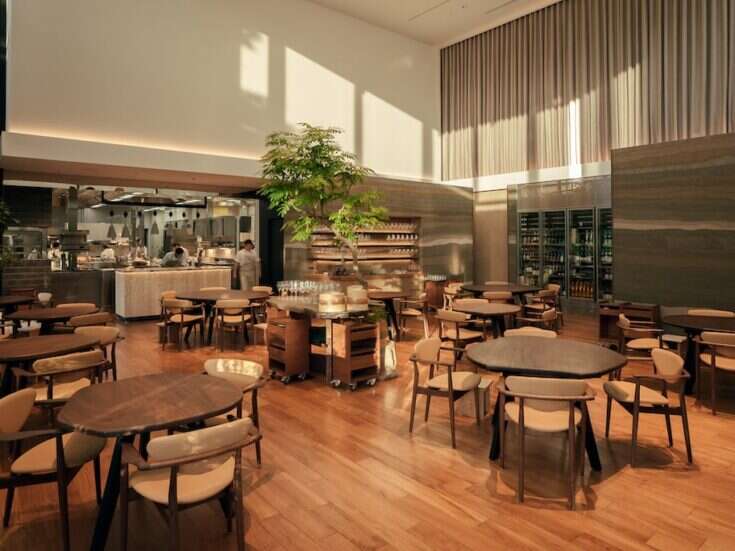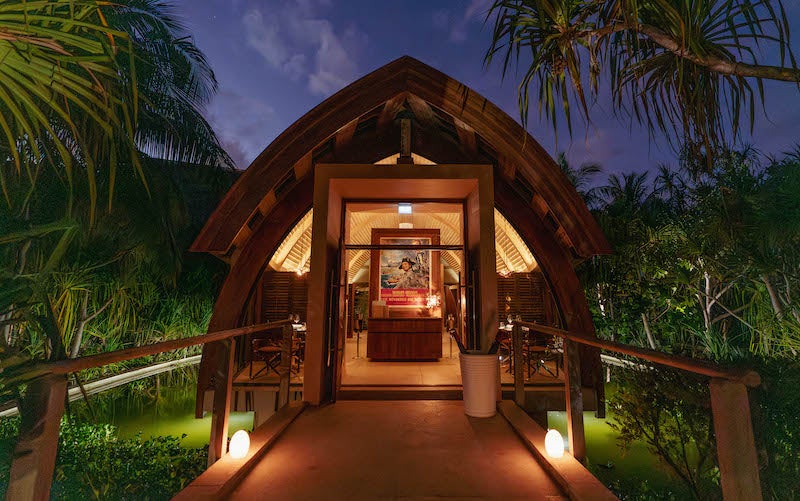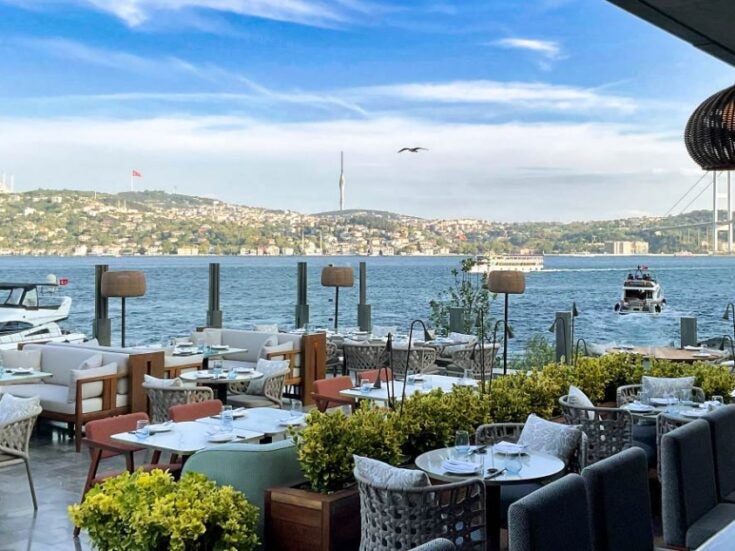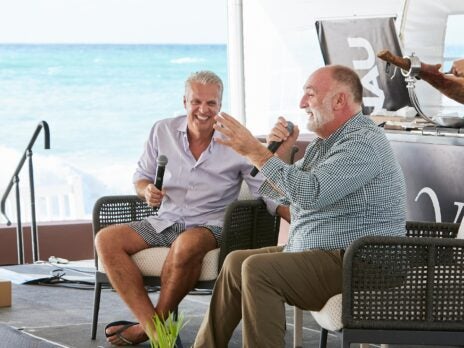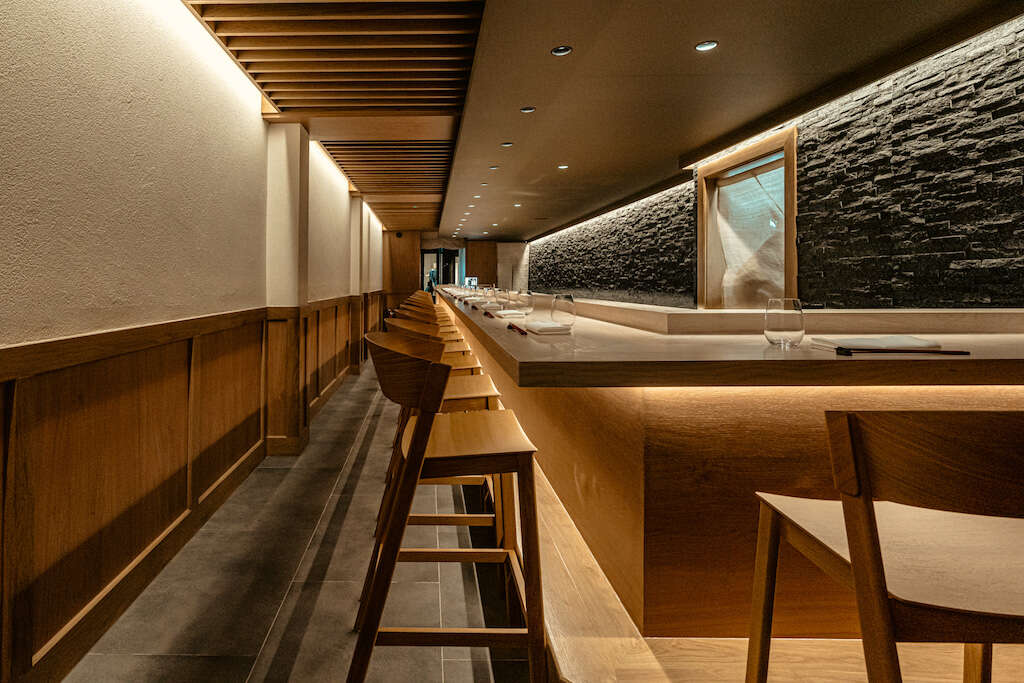
No longer are the most expensive restaurants in London huge, flashy establishments with outlandish décor and live entertainment; nowadays, the cities priciest spots are hidden behind discrete doorways, seat just a handful of diners and serve intricate Japanese dishes, often without even a plate. Welcome to the world of omakase.
Translating literally as “I’ll leave it up to you,” the concept of omakase invites diners to do away with a menu and give chefs the freedom to choose every dish. “You leave it up to the chef and then they will provide the best dishes they can, with the given ingredients from the market that day,” says Takuya Watanbe, chef patron of Taku, speaking via his translator-come-head chef, Long Ng.
This level of trust, especially in a customer-knows-best driven environment, can be daunting. The Michelin guide perhaps described the experience best when it claimed that “few formal dining experiences are as revered or as intimidating.”
It’s a preface that many restaurants lean in to, too – don’t be surprised to be sent a list of rules pre-dinner (I was instructed to forgo a spritz of perfume and to refrain from asking for any extras or accompaniments, including soy sauce, before my visit to Taku).
[See also: Maru Makes its Mark in London’s Mayfair]
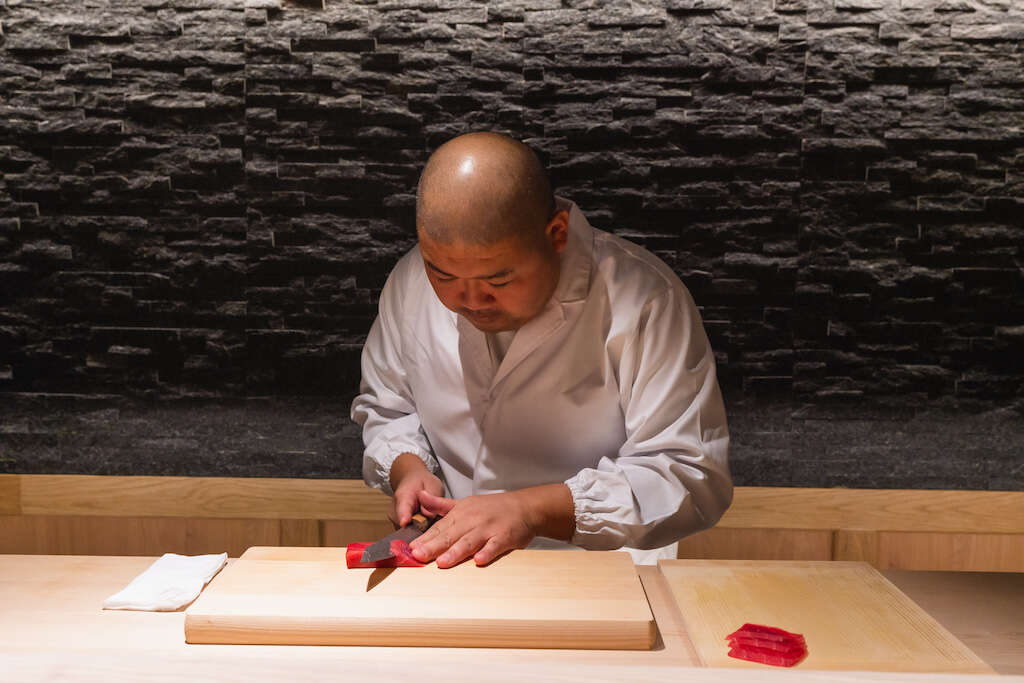
Hidden among the posh boutiques and fancy bars of Mayfair’s Albemarle Street, Taku seats just 16 guests per service (of which there are just three a day). If joining for dinner, each of those guests can expect to pay £300 ($365) for twenty courses, with a wine pairing and additional supplementary courses easily stacking the bill up to well over £500 per person.
Yet Taku is still not the most expensive omakase experience in London – other new openings ask for over £400 ($487) for food alone. But why are people open to spending so much? “We are targeting a specific customer base … When I developed the concept, I [knew] this was the kind of restaurant I wanted to do at this price point. Customers were willing to pay that much, and they always expected it to be of this level,” Watanbe says.
[See also: The Best Private Dining Rooms in London]
“Other restaurants target a specific price point and now, there are a lot more expensive restaurants because the customers demand it.”
Watanbe’s own take on omakase first materialized in Paris, where he founded Jin restaurant in 2013. When it was awarded a Michelin star in 2014, it became the first omakase restaurant in the city to have the accolade. “I spent a long time in Paris and saw a rise in the clientele appreciating Japanese culture and food. Omakase was gaining popularity [quickly],” Watanbe says.
[See also: Shinji Kanesaka Brings Sushi Restaurant to 45 Park Lane]
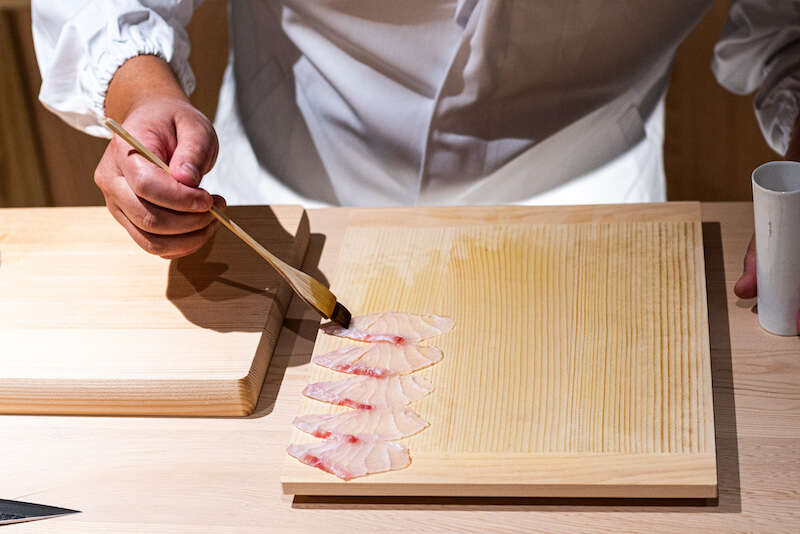
“In the past ten years, I had visited London here and there and could see that the right clientele was starting to understand Japanese food – that’s why [the city] has this current boom of [omakase] restaurants.”
In November 2022, with the support of the restauranter Leong family, Watanbe took the leap and opened Taku, placing Long as his head chef. By early 2023, it already had a Michelin star. “We were very happy to get a star so quicky,” he says. “Before opening, we were already targeting a star so it wasn’t surprising that we got one, but it was a surprise that we got it so fast.”
And does he the guide still as relevant? “Definitely, customers are still very concerned with Michelin. After we got the star, we saw a lot more tourists and customers from around the world coming to eat with us. I feel like [since getting] the star, the customer base has changed to [include] a lot more people who appreciate food.”
“It’s more fun for us to have customers [that appreciate food],” chef Long adds. “You can interact with the guests a little bit more. Otherwise, some people are just there because its expensive and they want to show off. When guests enjoy food, it’s easier to talk to them – it’s nice to have that change.”
[See also: Celebrating 25 Years of Restaurant Gordon Ramsay]
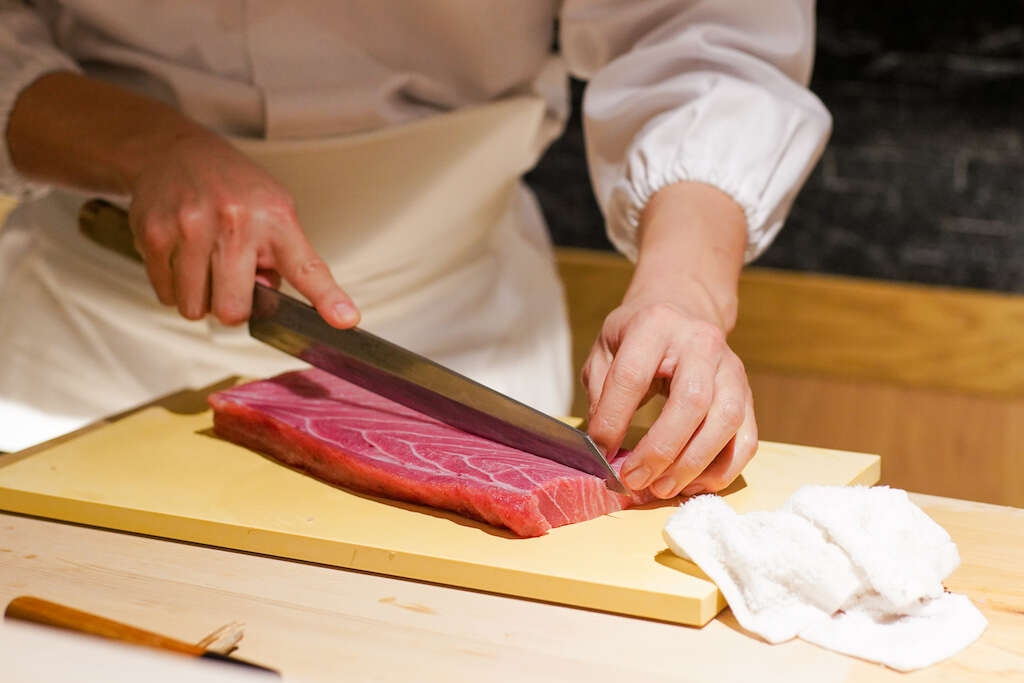
The Michelin star naturally set Taku apart – as of now, the restaurant is one of just two in London that focus specifically on omakase experiences – Long and Watanbe’s approach also differentiate it from competitors.
“The main difference is that we focus a lot more on fish preparation based on our sushi rice, which is pretty unique to us – we used a special blend of vinegar that makes it very sharp. Then, we develop different fish prep techniques based on this rice,” Watanbe says. “Other restaurants focus on the fish first and the rice is secondary, whereas we will adjust the local fish to fit our rice.”
While the whole nature of the concept means that every night, and indeed every sitting, will be different, you can expect to be guided through a series of starters, which Long proudly uses a chance for a little experimentation. Our sitting, for example, began with a rich, mussel broth before moving on to a sweet abalone risotto.
In the interest of freshness, the restaurant sources much of its fish from the British Isles with a few European examples too. Delicate slices of rare Spanish blue fin tuna proved to be one highlight, as were vibrant flashes of trout. Taku may be among the very priciest of dining experiences in London, but it is proudly one of the best, too – and that second star is high on Watanbe’s priority list.
[See also: Elite Traveler Reveals Top Restaurants Readers’ Choice 2023]
